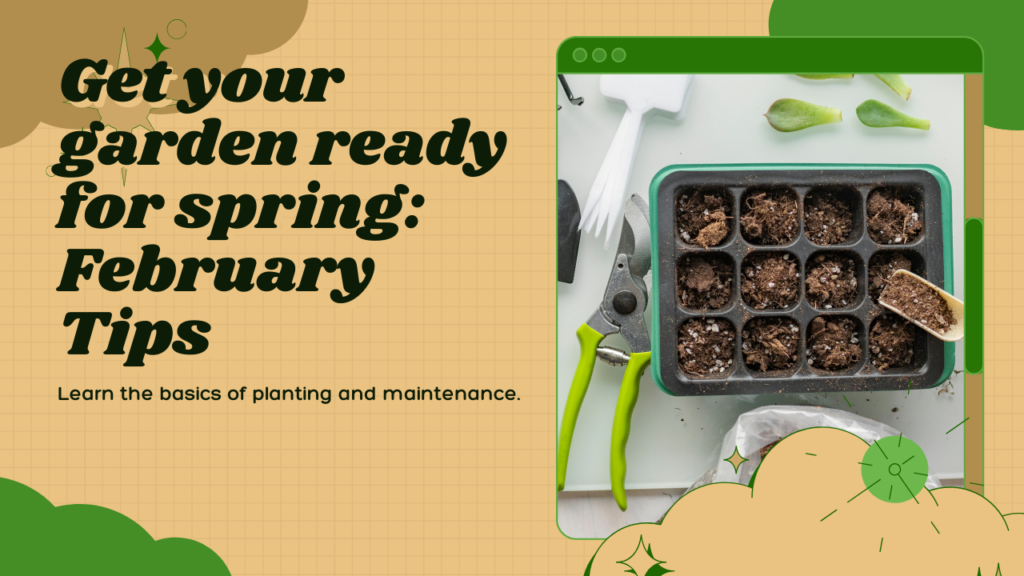
Welcome to our February gardening tips! As we enter this transitional month, it’s time to start preparing your garden for the upcoming spring season. With the right techniques, you can make the most of February and set the foundation for a beautiful and thriving garden in the months to come.
Whether you’re an experienced gardener or a beginner, our expert advice will guide you through the essential tasks to focus on this month. From clearing debris and tidying up the soil to pruning plants and protecting delicate flowers, we’ve got you covered with practical tips and step-by-step instructions to ensure success.
So, let’s get started and make the most of February in your garden. Are you ready to unleash the full potential of your green space? Let’s dive in!
Key Takeaways:
- Prepare your garden for the upcoming spring season by clearing debris and tidying up the soil.
- Properly prune and trim your plants to promote healthy growth and maintain their shape.
- Take care of your flowers in February by protecting them from frost and winter-related damages.
- Start planting early spring bulbs to add vibrant colors to your garden.
- Plan and prepare for spring vegetable crops by considering suitable vegetables for planting in February.
Preparing Your Garden for February
Before diving into specific tasks for February, it’s important to prepare your garden for the month ahead. This includes clearing debris, tidying up the area, and assessing any maintenance needs. By taking these steps, you’ll create a clean and organized garden environment that sets the stage for successful gardening throughout the year.
Cleaning and Clearing Debris
To start preparing your garden for February, begin by clearing away any debris that has accumulated over the winter months. Remove fallen leaves, twigs, and dead plants. This not only improves the appearance of your garden but also helps to prevent the buildup of pests and diseases.
“Clearing away debris not only improves the appearance of your garden but also helps to prevent the buildup of pests and diseases.”
Tidying Up the Area
After clearing debris, it’s time to tidy up the area. Trim back any overgrown branches or plants that may hinder the growth of neighboring plants. Make sure pathways are clear and easily accessible. Taking these steps will create a more organized and visually pleasing garden space.
Assessing Maintenance Needs
In addition to clearing debris and tidying up, it’s crucial to assess any maintenance needs in your garden. Check for damaged structures, such as fencing or trellises, and repair or replace as necessary. Inspect garden tools and equipment to ensure they are in good working condition. This proactive approach will save you time and effort in the long run.
Preparing Soil for Planting
Lastly, before you proceed with specific gardening tasks for February, it’s essential to prepare your soil. Loosen the top layer of soil using a garden fork or tiller, allowing better water drainage and root penetration. Incorporate organic matter, such as compost or well-rotted manure, to improve soil fertility and structure.
Pruning and Trimming Plants
In February, pruning and trimming are crucial tasks to ensure the healthy growth and overall shape of your plants. Proper pruning techniques can enhance the beauty and vigor of your garden, allowing it to thrive throughout the year. Here are some essential tips and techniques to help you prune and trim different types of plants effectively:
1. Understand the Pruning Objectives
Before you start pruning, it’s essential to understand why you are doing it. Some common objectives of pruning include:
- Removing dead or diseased branches
- Enhancing the plant’s shape and structure
- Encouraging better air circulation and light penetration
- Controlling pests and diseases
2. Choose the Right Tools
Using the right tools for pruning is crucial to achieve clean and precise cuts. Ensure you have the following tools handy:
- Pruning shears for small branches
- Loppers for thicker branches
- Pruning saw for large branches
- Gloves for protection
3. Identify the Pruning Type
Understanding the specific pruning needs of each plant is essential for proper pruning. Different plants require different pruning techniques, such as:
- Crown Thinning: Removing inner branches to improve air circulation
- Crown Raising: Removing lower branches to create space beneath the plant
- Crown Reduction: Reducing the overall size of the plant
- Heading Back: Trimming the ends of branches to encourage new growth
4. Prune at the Right Time
Timing is crucial when it comes to pruning. While February is generally a suitable time for pruning most plants, make sure to consider the specific requirements of each plant species. Prune flowering plants after they have bloomed, and avoid pruning cold-sensitive plants until the risk of frost has passed.
5. Make Clean Cuts
When pruning, it’s important to make clean cuts to minimize damage and promote faster healing. Always use sharp, sterilized tools to ensure clean cuts and prevent the spread of diseases. Cut just above the node or bud, angling the cut away from the bud.
To further illustrate the pruning process, here is an image that provides a visual guide:
6. Maintain Pruning Tools
Keeping your pruning tools well-maintained is essential for their optimal performance and longevity. Clean your tools after each use to prevent the spread of diseases, and regularly sharpen them to ensure clean cuts. Lubricate moving parts to prevent rust and ensure smooth operation.
Remember, regular pruning and trimming contribute to the overall health and appearance of your garden. By following these tips and techniques, you can achieve beautiful, well-maintained plants that thrive throughout the year.
Flower Care in February
During February, it’s crucial to provide proper care for your flowers as the cold weather can still pose a threat. By taking the necessary precautions and implementing effective techniques, you can protect your delicate blooms from frost and other winter-related damages. This will ensure that they flourish beautifully when spring arrives.
Protecting Flowers from Frost
Protecting your flowers from frost is essential to safeguard their health and vitality. The sudden drops in temperature can cause irreversible damage to the delicate petals and leaves. Here are some strategies you can employ:
- Cover your flowers: Use frost blankets or cloth to cover your flowers during cold nights. This will help insulate them and prevent frost formation.
- Mulch around the base: Apply a layer of mulch around the base of your flowers to provide insulation and retain heat. This will protect the roots from freezing.
- Bring potted flowers indoors: If you have potted flowers, consider bringing them indoors during frosty nights to shield them from the cold.
Flower Care Tips for February
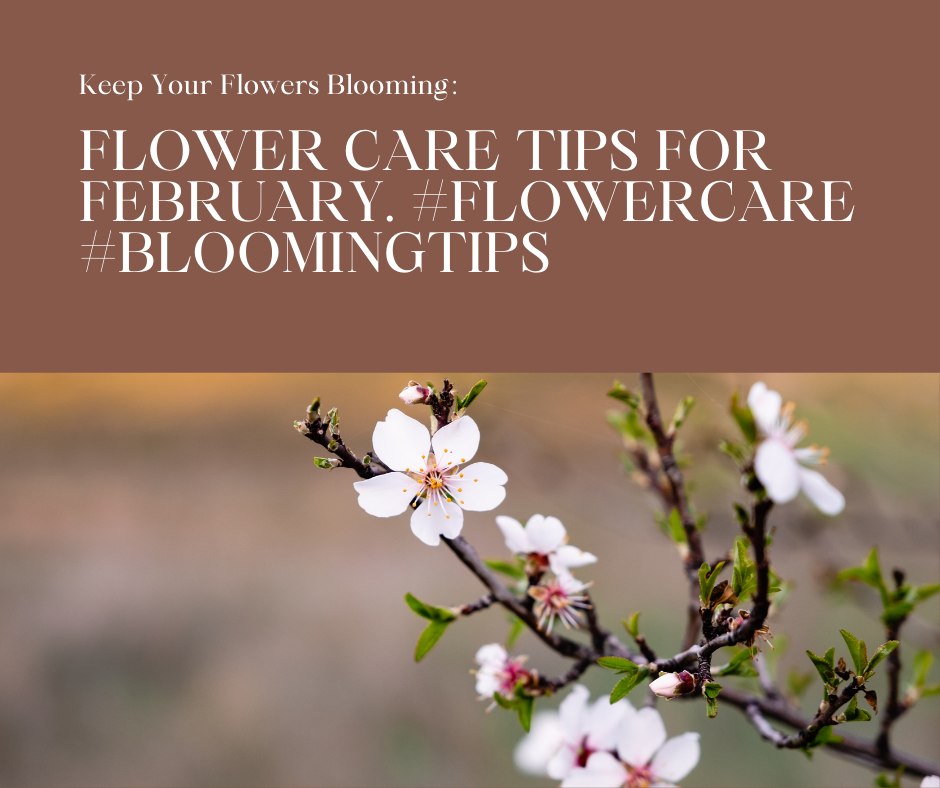
In addition to protecting your flowers from frost, there are other care tips to keep in mind during February. These practices will contribute to their overall well-being and promote healthy growth:
- Water wisely: While it may be tempting to reduce watering during winter, it’s important to monitor the moisture level of your soil. Do not let it dry out completely, as some flowers still require regular hydration.
- Prune selectively: If any damaged or dead parts of your flowers are evident, carefully remove them. Pruning encourages new growth and prevents the spread of diseases.
- Inspect for pests and diseases: Regularly inspect your flowers for signs of pests and diseases. Treat any issues promptly to prevent further damage.
- Apply organic fertilizers: Consider applying organic fertilizers to nourish your flowers during their dormant phase. This will ensure they receive the necessary nutrients for renewed growth in the upcoming months.
By implementing these flower care practices, you can protect your blooms from frost and provide them with the necessary care they need in February. With proper attention and nurturing, your flowers will thrive and bring vibrant beauty to your garden when spring arrives.
Planting Early Spring Bulbs
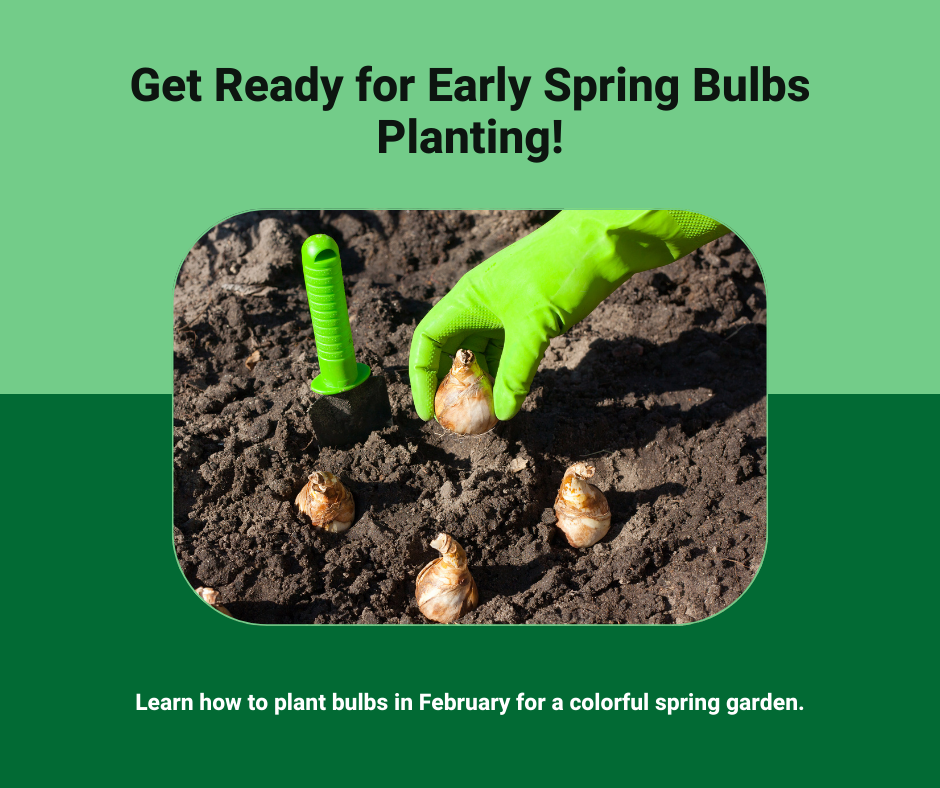
In February, seize the opportunity to bring a vibrant burst of color to your garden by planting early spring bulbs. These resilient beauties not only add visual appeal but also serve as a hopeful reminder of the approaching warmer days.
When choosing the right bulbs for your garden, consider factors such as bloom time, color, and height. Popular options include tulips, daffodils, crocuses, and hyacinths. Take a moment to envision the color palette and arrangement that best complements your existing garden or desired aesthetic.
Preparing the soil is crucial for the successful growth of your bulbs. Start by selecting a location with well-draining soil and adequate sunlight. Remove any weeds or debris that may impede their growth. Consider adding organic matter or compost to enhance the soil’s fertility and drainage.
When it’s time to plant the bulbs, dig individual holes or prepare trenches at the appropriate depth. As a general rule of thumb, bulbs should be planted at a depth equal to three times their size. Ensure the pointed end faces upward for optimal growth. If you opt for a more natural look, scatter the bulbs across a designated area and gently cover with soil.
Pro Tip: To create an eye-catching display, consider planting bulbs in clusters or staggered intervals. This technique adds dimension and visual interest to your garden.
After planting, water the bulbs thoroughly to settle the soil and provide them with the moisture they need to kickstart their growth. Keep the soil consistently moist but avoid overwatering, as this can lead to bulb rot.
Now, eagerly await the arrival of spring and the captivating blooms that will adorn your garden. The anticipation is half the joy, and as the days grow longer and temperatures rise, you’ll be rewarded with a breathtaking display of nature’s beauty.
Vegetable Gardening in February

If you’re interested in growing your own vegetables, February is an important time to plan and prepare. As the winter season draws to a close, it’s the perfect opportunity to get a head start on your spring vegetable crops. In this section, we will discuss which vegetables are suitable for planting in February, provide tips on starting seeds indoors, and guide you on planning for a successful vegetable garden.
Choosing the Right Vegetables for February Planting
While February is still considered winter in many regions, there are several vegetables that can be planted early to enjoy an abundant harvest in the coming months. Some popular choices include:
- Leafy greens like lettuce, spinach, and kale
- Root crops such as carrots, radishes, and beets
- Cool-season crops like peas, broccoli, and cauliflower
By selecting these vegetables for planting in February, you can take advantage of their ability to tolerate cooler temperatures and thrive in the early spring.
Starting Seeds Indoors for Early Planting
Starting seeds indoors in February is a great way to kick-start the growing process and give your vegetable garden a head start. It allows you to control the environment and provide optimal conditions for germination and early growth. Here are a few tips to get you started:
- Choose high-quality seeds from a reputable supplier.
- Use seed trays or containers filled with a well-draining soil mix.
- Provide adequate warmth and light for proper seed germination.
- Transplant the seedlings outdoors once the risk of frost has passed.
By starting your seeds indoors, you can extend your growing season and enjoy fresh vegetables even earlier in the year.
Planning for Spring Vegetable Crops
While February is the time to start planting some vegetables, it’s also crucial to plan for your spring vegetable crops. Take into consideration factors such as:
- The space available in your garden for different crops
- The specific growing requirements of each vegetable
- The ideal timing for planting and harvesting
By creating a comprehensive plan, you can maximize your garden’s potential and ensure a bountiful harvest in the spring.
So, get ready to dig in and make the most of February to kickstart your vegetable garden. With careful planning, indoor seed starting, and the right vegetable selection, you’ll be well on your way to enjoying a successful growing season.
Checking Irrigation Systems and Inspecting for Pests and Diseases
Ensuring the proper functioning of your garden’s irrigation system and vigilantly inspecting for pests and diseases are crucial tasks in maintaining a healthy garden. By regularly checking your irrigation system and implementing pest and disease prevention measures, you can prevent potential issues and promote the overall well-being of your plants.
Checking Irrigation Systems
Proper irrigation is essential for the health and growth of your plants. In February, it’s important to inspect your irrigation system to ensure it is in good working condition. Here are a few steps to follow:
- Check for any leaks or clogs in the irrigation lines. Repair or replace any damaged parts accordingly.
- Adjust the watering schedule to accommodate the changing weather conditions. Reduce watering frequency and duration during colder periods.
- Inspect the sprinkler heads and make sure they are distributing water evenly across your garden.
- Consider installing a rain sensor or a smart irrigation controller to optimize water usage and prevent overwatering.
Inspecting for Pests and Diseases
February is a critical time to proactively inspect your garden for pests and diseases. Early detection can help prevent the spread and minimize damage. Here are some steps to follow:
- Visual inspection: Regularly examine the leaves, stems, and other plant parts for any signs of infestation or disease. Look out for unusual spots, discoloration, holes, or wilting.
- Pest identification: If you spot any pests, identify them accurately to determine the appropriate treatment method. Use online resources or consult with local gardening experts for assistance.
- Integrated pest management: Employ a combination of cultural, biological, and chemical control methods to manage pests and diseases effectively. This approach minimizes the reliance on pesticides, reducing potential harm to beneficial insects and the environment.
Tip: It’s essential to know the specific pests and diseases common to your region. Stay informed about local garden pests and consult local gardening communities or extension offices for guidance on prevention and control measures.
| Pest/Disease | Prevention and Control |
|---|---|
| Aphids | Introduce ladybugs or lacewings, use insecticidal soap, or spray with a strong stream of water to dislodge them. |
| Fungal Diseases | Avoid overhead watering, ensure proper air circulation, and apply fungicides as needed. |
| Slugs and Snails | Set up deterrents like copper tape or diatomaceous earth, handpick them in the evening, or use slug baits. |
By regularly checking your irrigation system and inspecting for pests and diseases, you can maintain a thriving garden and prevent potential issues from escalating. Stay proactive and address any problems promptly to ensure the health and beauty of your plants throughout the year.
Seasonal Tasks and Projects
As the seasons change, so do the tasks and projects in your garden. February offers the perfect opportunity to embark on a variety of seasonal tasks and projects that will not only beautify your garden but also enhance its functionality. Whether you’re interested in adding new structures, implementing sustainable practices like composting, or exploring creative projects, there’s something for everyone to enjoy. Let’s dive into some ideas that can inspire your February gardening endeavors.
Garden Structures
Building new garden structures can breathe new life into your outdoor space. Whether you’re looking to create a cozy seating area, install a trellis for climbing plants, or construct raised beds for your vegetable garden, now is the time to get started. Consider your garden’s layout and the activities you enjoy the most, then explore options that align with your vision. Remember to choose materials that are durable and suitable for your local climate.
Composting System
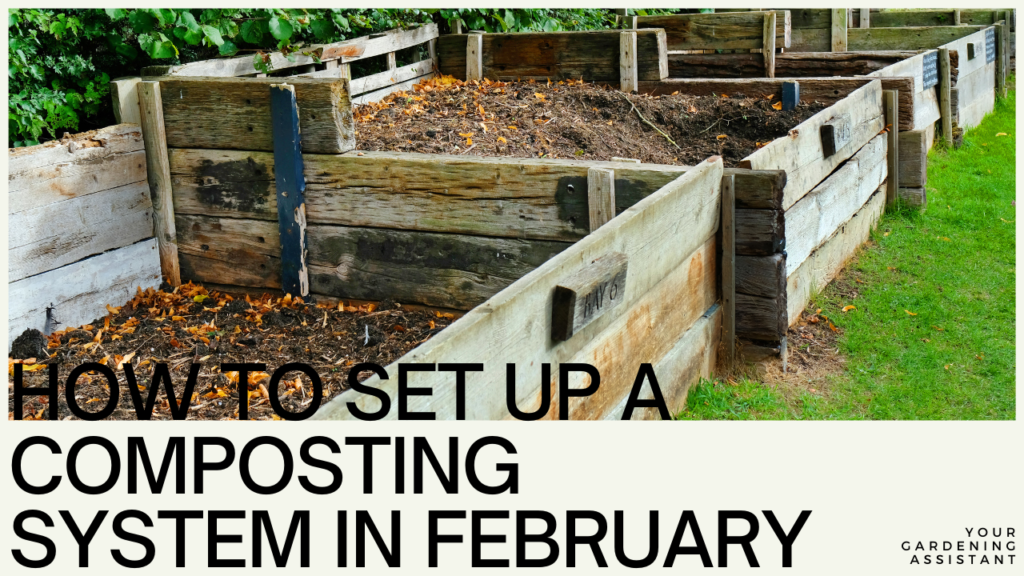
If you’re passionate about sustainability and reducing waste, implementing a composting system is a fantastic project to undertake. Composting allows you to transform kitchen scraps, yard waste, and other organic materials into nutrient-rich soil amendment for your garden. Start by researching different composting methods such as traditional compost piles, compact tumblers, or worm composting. Select the approach that suits your space, preferences, and time availability.
Artistic Elements
Add a touch of whimsy and visual appeal to your garden by incorporating artistic elements. This could range from installing sculptures and birdbaths to creating mosaic stepping stones or painting colorful murals. Let your imagination run wild and choose elements that reflect your personal taste and style. These artistic touches will not only make your garden unique but also provide a focal point that draws the eye and sparks conversation.
“Art enables us to find ourselves and lose ourselves at the same time.” – Thomas Merton
Container Gardening
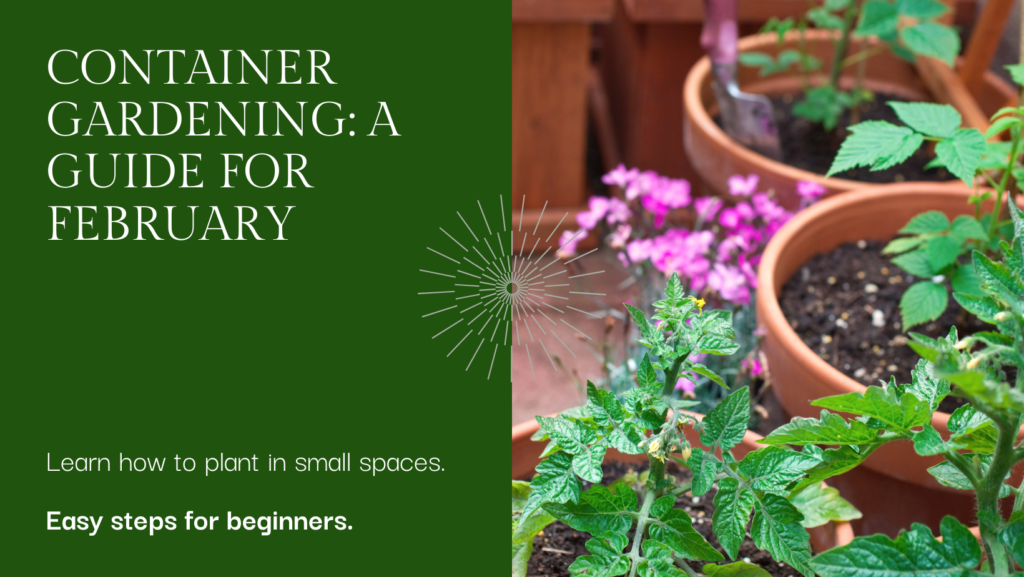
If you have limited space or want to add a splash of color to specific areas, consider container gardening. Select a variety of containers, such as pots, planters, or hanging baskets, and fill them with seasonal flowers, herbs, or vegetables. This allows you to experiment with different plant combinations, change the arrangement whenever you desire, and create a portable garden that can be enjoyed from multiple angles.
Children’s Garden
Engage your children or grandchildren in gardening by creating a dedicated children’s garden area. This can be a small plot or even a few containers where kids can explore the magical world of plants, learn about the importance of nature, and discover the joy of growing their own vegetables or flowers. Encourage their creativity by providing child-sized tools, markers for painting plant markers, and easy-to-grow plants like sunflowers or cherry tomatoes.
February Gardening Projects
| Project | Description |
|---|---|
| Building garden structures | Create seating areas, trellises, or raised beds. |
| Implementing a composting system | Transform kitchen scraps and yard waste into compost. |
| Adding artistic elements | Install sculptures, murals, or decorative features. |
| Exploring container gardening | Create vibrant displays in pots, planters, or hanging baskets. |
| Creating a children’s garden | Engage children in gardening with their own dedicated space. |
Starting Seeds Indoors
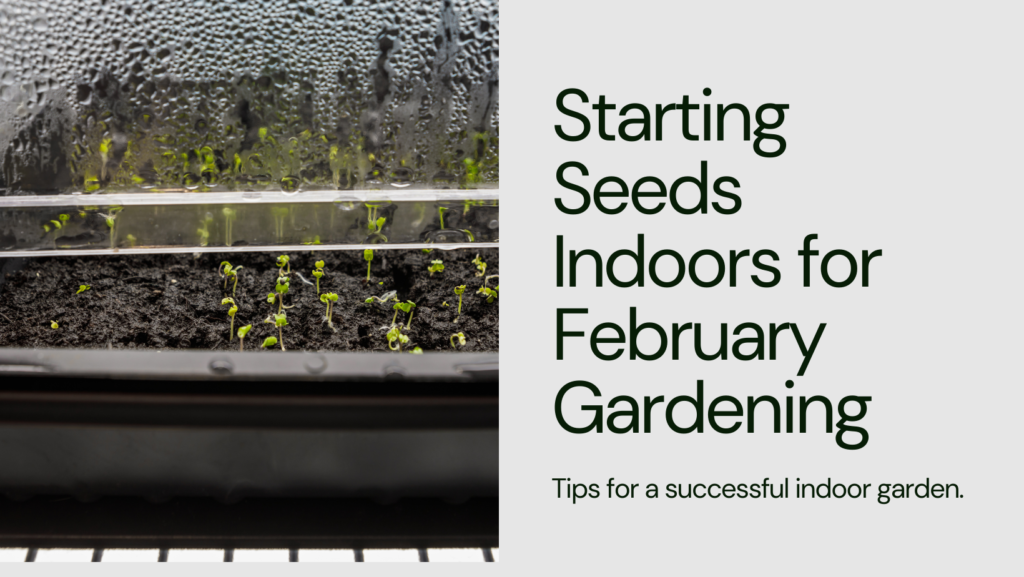
In February, you have the perfect opportunity to get a head start on your garden by starting seeds indoors. This allows your plants to establish strong roots and develop before being transplanted outside. Follow these step-by-step instructions to ensure successful seed germination and healthy plant growth.
Selecting Suitable Containers
Choose containers that provide enough space for the roots to grow and have good drainage to prevent waterlogging. You can use seed trays, pots, or recycled containers like egg cartons. Remember to clean and sterilize the containers before use to prevent the spread of diseases.
Preparing the Soil Mix
Create a well-draining soil mix by combining equal parts of peat moss, vermiculite, and perlite. This mixture provides a lightweight and nutrient-rich environment for the seeds to sprout. Moisten the soil mix before filling the containers, ensuring it is damp but not soaking wet.
Sowing the Seeds
Follow the instructions on the seed packets for the correct planting depth and spacing. Gently press the seeds into the pre-moistened soil mix, covering them with a thin layer of soil. Mist the surface with water using a spray bottle to keep the seeds moist without disturbing them.
Providing Optimal Conditions
Place the containers in a warm location with consistent temperatures between 65°F and 75°F (18°C and 24°C). To maintain humidity, cover the containers with a clear plastic dome or use plastic wrap. Position the containers near a bright window, ensuring the seedlings receive at least 6-8 hours of indirect sunlight each day.
Caring for the Seedlings
As soon as the seedlings emerge, remove the plastic cover and continue to water them gently whenever the soil surface feels dry. Use a diluted, balanced fertilizer once the second set of true leaves appears. This will provide the necessary nutrients for healthy growth.
Hardening Off and Transplanting
When the threat of frost has passed and the seedlings have developed strong roots and several sets of leaves, it’s time to harden them off. Gradually introduce the seedlings to outdoor conditions by placing them outside for a few hours each day and gradually increasing the exposure over a week. Finally, transplant the hardened-off seedlings into your garden, ensuring the soil has warmed up and all risk of frost has passed.
Starting seeds indoors in February gives you a valuable head start and allows you to enjoy healthy and robust plants in your garden. With careful attention to detail and proper care, your seedlings will thrive and contribute to a bountiful and beautiful garden.
FAQ
Q. How should I prepare my garden for February?
A. To prepare your garden for February, start by clearing debris and tidying up the area. This includes removing fallen leaves, dead plants, and any other clutter. Assess the soil and make any necessary amendments for optimal plant growth. It’s also a good time to check and maintain your irrigation system.
Q. How do I prune and trim plants in February?
A. Pruning and trimming plants in February is essential for promoting healthy growth and maintaining their shape. Start by removing any dead or damaged branches. Consider the specific needs of each plant, as some may require more aggressive pruning while others may only need minor trimming. Always use clean and sharp tools to minimize stress on the plants.
Q. What flower care should I take in February?
A. In February, it’s important to protect your flowers from frost and other winter-related damages. Cover delicate blooms with frost blankets or mulch to provide insulation. Avoid overwatering, as wet soil combined with cold temperatures can lead to root rot. Monitor your flowers for signs of disease or pests and take appropriate action if necessary.
Q. Can I start planting early spring bulbs in February?
A. Yes, February is the perfect time to start planting early spring bulbs. Choose bulbs that are suitable for your climate and garden conditions. Prepare the soil by adding organic matter and ensuring good drainage. Plant the bulbs at the recommended depth and spacing, and make sure to water them regularly. You’ll be rewarded with beautiful blooms when spring arrives.
Q. What vegetables can I grow in February?
A. In February, you can start planning for spring vegetable crops. Cool-season vegetables like lettuce, spinach, broccoli, and carrots can be planted early in the month. Start seeds indoors for warm-season vegetables like tomatoes and peppers. Pay attention to your local climate and frost dates to determine the best vegetables to grow in February.
Q. How do I check my irrigation system and inspect for pests and diseases in February?
A. Ensure your garden’s irrigation system is functioning properly by checking for leaks, clogged sprinkler heads, and uneven watering. Clear any debris that may interfere with irrigation. While inspecting, also check plants for signs of pests or diseases, such as discoloration, spots, or unusual growth. Take appropriate measures to prevent and treat any issues you find.
Q. What are some seasonal tasks and projects I can engage in February?
A. February presents an opportunity to tackle various seasonal tasks and projects. Consider building new garden structures like raised beds or trellises. Implement a composting system to recycle kitchen scraps and yard waste. Start a herb or vegetable garden indoors. Use this time to plan for future improvements, such as adding new flowers or expanding your garden space.
Q. How do I start seeds indoors in February?
A. Starting seeds indoors in February will give your plants a head start. Choose appropriate containers like seed trays or peat pots. Use a good-quality seed starting mix and follow the instructions for planting depth and spacing. Keep the soil consistently moist and provide adequate light and warmth. Once the seedlings have grown, transplant them to larger containers or your garden.
Q. Can you summarize the February gardening tips?
A. By following these February gardening tips, you can set the foundation for a thriving garden in the coming months. Prepare your garden by clearing debris and assessing maintenance needs. Prune and trim plants to promote healthy growth. Take care of flowers by protecting them from frost and monitoring for pests and diseases. Start planting early spring bulbs and consider vegetable gardening. Check your irrigation system and inspect for issues. Engage in seasonal tasks and projects, and start seeds indoors for a head start. Overall, February is a crucial month in preparing for the upcoming spring season.
Conclusion
In conclusion, by following these February gardening tips, you can set the foundation for a thriving garden in the coming months. Whether it’s clearing debris and preparing the soil, pruning and trimming plants, or taking care of flowers, each task contributes to the overall success of your garden.
By planting early spring bulbs and starting seeds indoors, you can ensure a beautiful and vibrant garden display in the upcoming season. Additionally, checking your irrigation systems and inspecting for pests and diseases will help maintain the health of your plants.
Remember, February also provides an opportunity for seasonal tasks and projects, such as building new garden structures and implementing a composting system, which can enhance the functionality and beauty of your garden. So, get ready for the spring season now, and unlock the full potential of your garden!
















